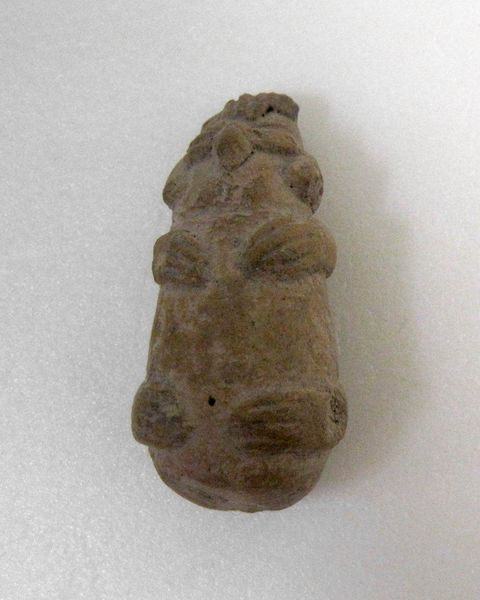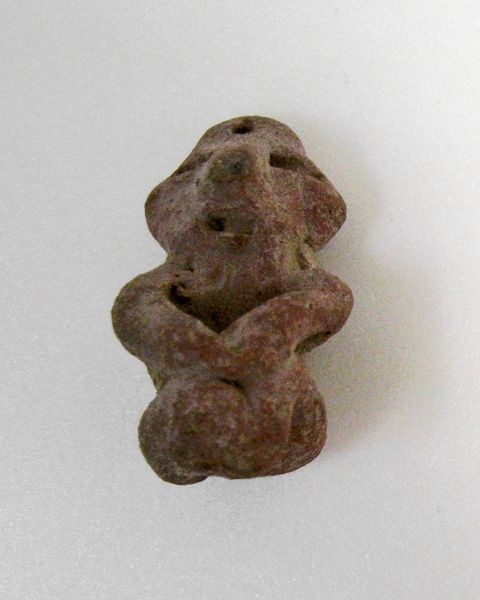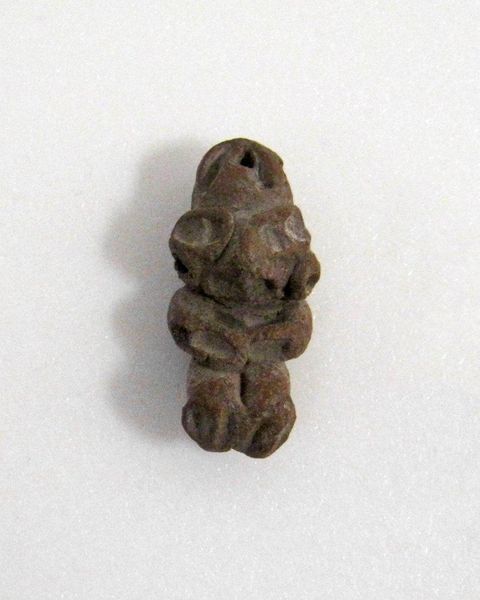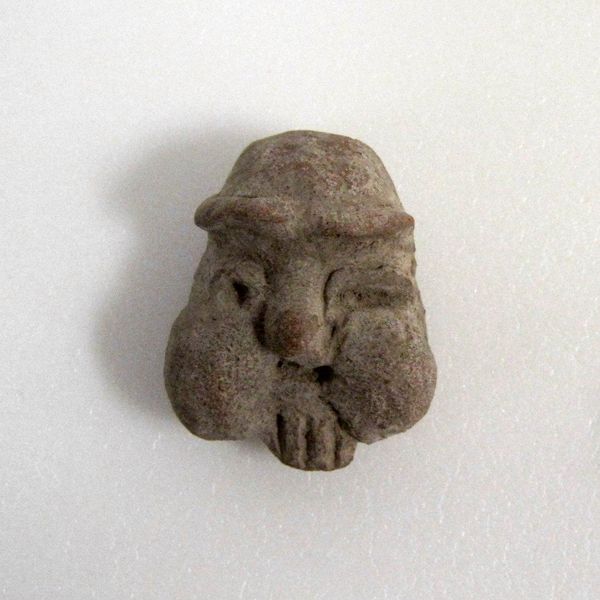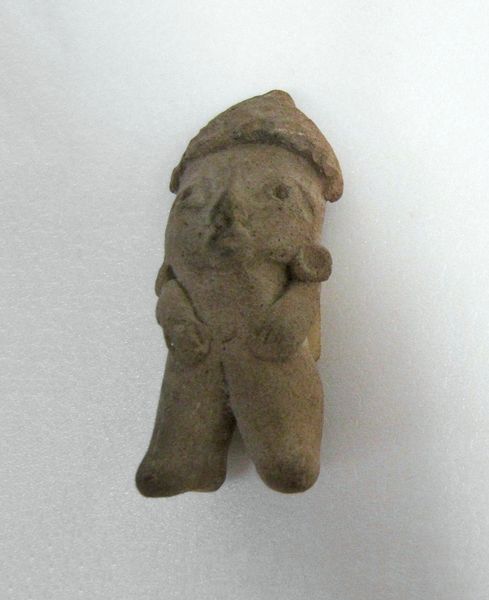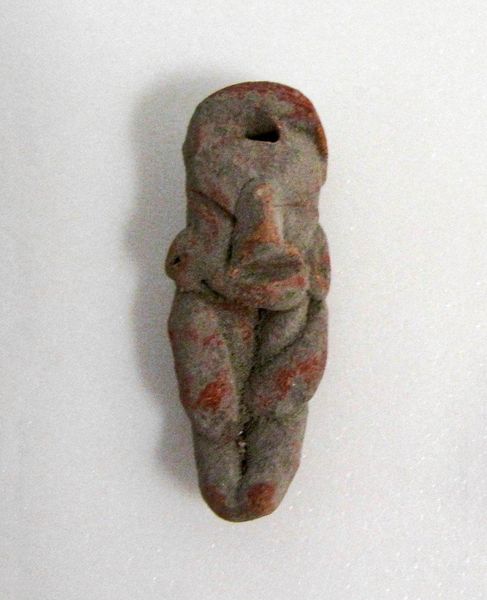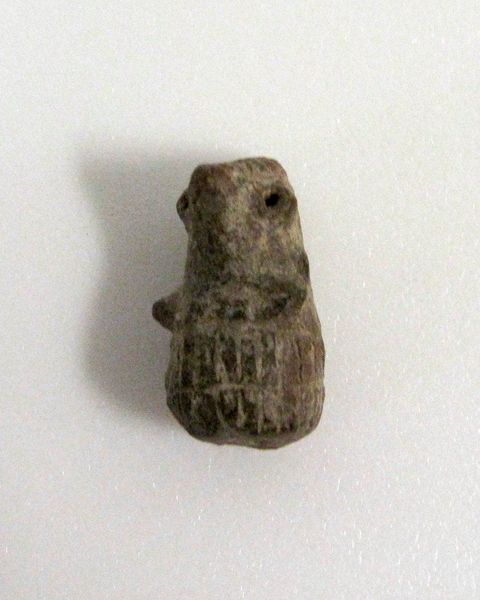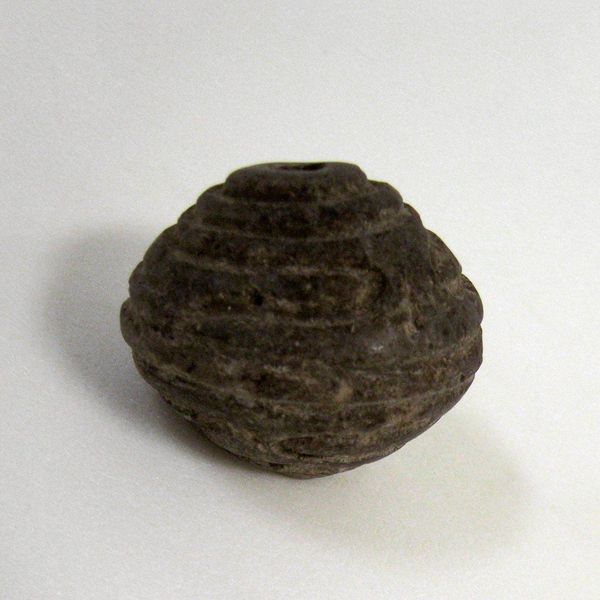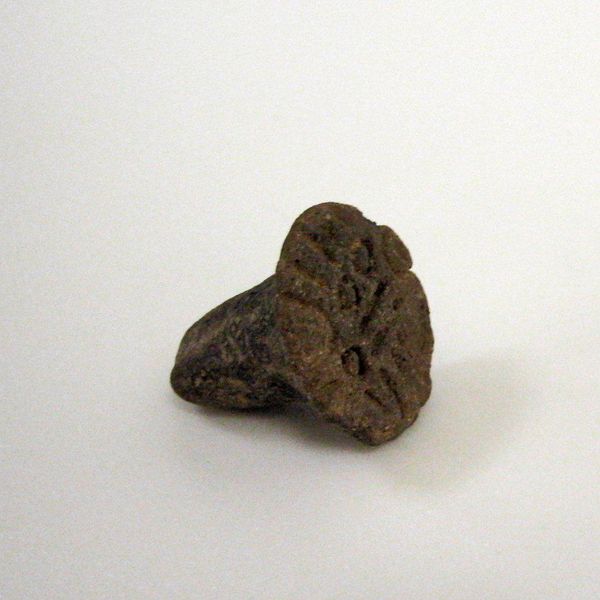
carving, sculpture
#
carving
#
sculpture
#
figuration
#
ancient-mediterranean
#
sculpture
Dimensions: 2 3/4 x 1 1/2 x 1 in. (7 x 3.8 x 2.5 cm)
Copyright: Public Domain
Editor: Here we have a piece titled "Figure", likely carved sometime between 400 and 500. It's currently housed at the Minneapolis Institute of Art, and records indicate it was created by an anonymous artist. The carving's material looks like some type of dark stone. What stands out to me is its almost minimalist approach to depicting a figure. What do you make of it? Curator: Well, it is critical to consider this "Figure" within its original production and reception context. The tool marks evident on the stone surface – the traces of labor – are extremely revealing. We should ask: what tools were used? Where did the stone originate? Editor: That's interesting, I hadn't considered the source of the stone itself! How would that affect its meaning? Curator: Thinking about the quarrying process and trade networks active at the time can reshape our understanding. Was this material locally sourced, or was it a luxury import? This speaks volumes about the resources, knowledge and access this unknown sculptor possessed, right? And therefore to what patronage system they were tied to, even what kind of cultural values informed this figuration. Editor: So you're saying the raw materials and the process of creating the piece tell as much of a story as the finished object? Curator: Precisely. The "Figure"'s form results from the dynamic interplay between human intention, material constraints and socio-economic circumstances. The choice to carve—instead of model with clay, for instance—would tell us of resources available to the culture it represents. How does focusing on materiality change your perception now? Editor: I definitely see it differently. It moves away from simply depicting a figure, and points towards an entire network of production and exchange. The art, in a sense, lies as much in these connections as in the final form. Curator: Exactly! Looking at it this way bridges the gap between 'art' and craft; it makes it much more exciting to explore non-western traditions in art making, too. I've found this very thought-provoking.
Comments
No comments
Be the first to comment and join the conversation on the ultimate creative platform.
